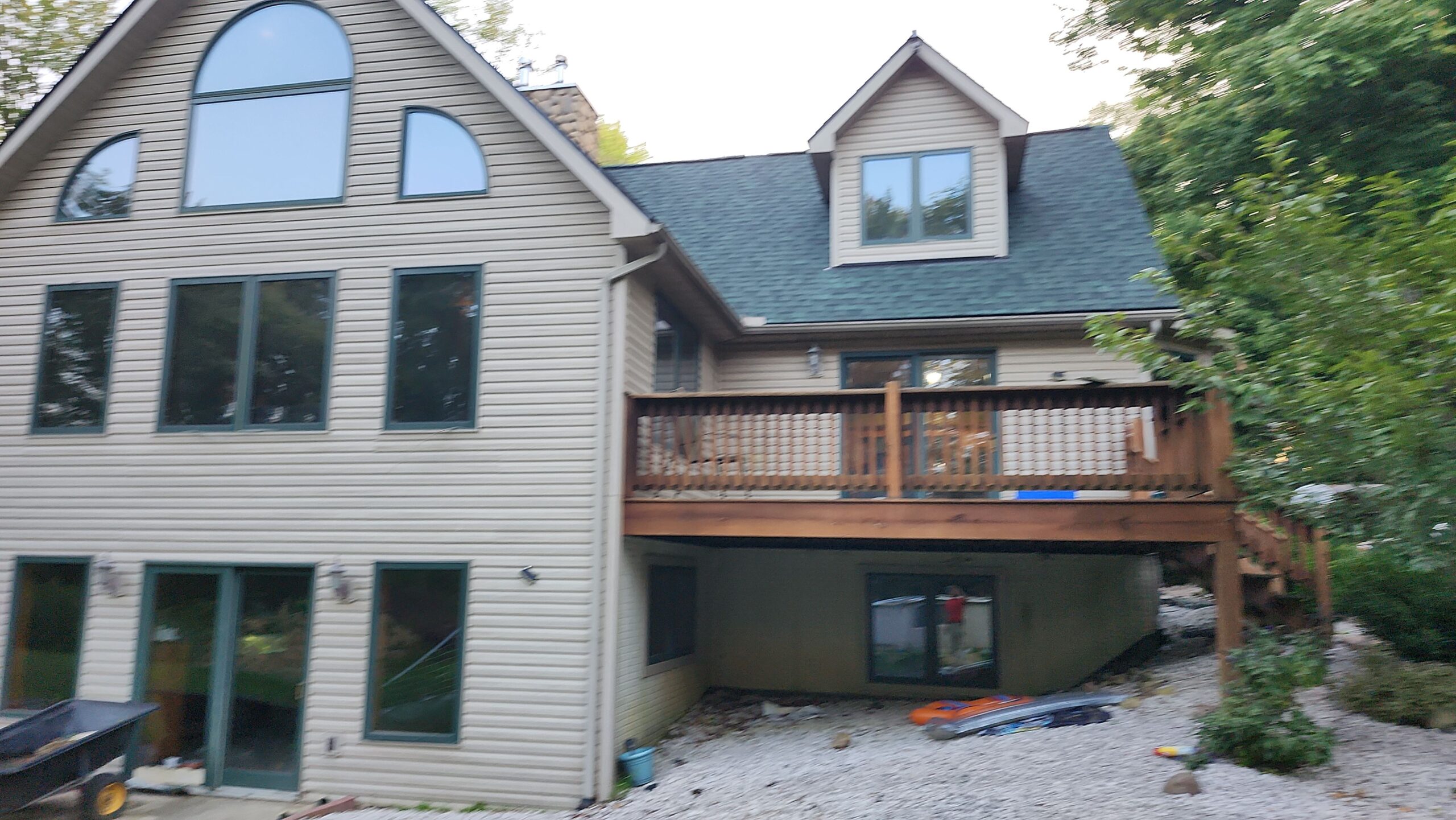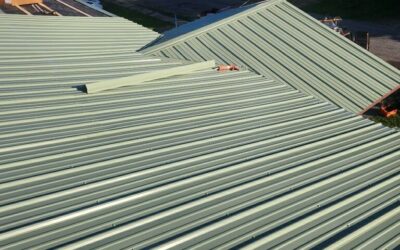How Heat Affects Your Roof: Understanding the Impact and How to Protect Your Home
When we think of roof maintenance, we often focus on the basics: weatherproofing, preventing leaks, and ensuring that shingles are intact. However, one factor that is often overlooked is heat. While a roof may seem solid and durable, the heat it is exposed to can significantly impact its lifespan, integrity, and energy efficiency. Whether it’s the intense summer sun, the fluctuating temperatures, or the long-term effects of heat exposure, understanding how heat affects your roof can help you make informed decisions about maintenance, repairs, and replacements.
At S&K Construction and Remodeling LLC, we believe in educating our clients so they can make the best choices for their homes. As an Owens Corning Preferred Contractor serving the Northeast Ohio area, we want to help you protect your roof from the damaging effects of heat. In this comprehensive guide, we will explore how heat impacts your roof, what signs to look for, and how to take steps to protect your home.
The Science Behind Heat and Roofing Materials
To understand how heat affects your roof, it’s important to know how different materials react to prolonged exposure to high temperatures. Roofing materials are designed to withstand a variety of environmental factors, including rain, wind, and UV rays. However, excessive heat can degrade materials and accelerate the aging process.
1. Asphalt Shingles: Asphalt shingles are the most common roofing material in the United States, and they are particularly vulnerable to heat. The sun’s heat causes asphalt shingles to dry out, becoming brittle and less flexible over time. This degradation can lead to cracks, curling, and granule loss. Asphalt shingles also absorb heat, making your home warmer and increasing the demand on your air conditioning.
2. Metal Roofing: Metal roofing is generally more heat-resistant than asphalt shingles. However, metal roofs can also heat up during the summer months. When metal absorbs heat, it can expand, causing the material to contract when temperatures drop at night. This expansion and contraction cycle can weaken the material over time, leading to potential issues like warping or buckling if not properly installed.
3. Clay and Concrete Tiles: Clay and concrete tiles are often used in hot climates because they provide excellent thermal insulation. These materials are naturally resistant to heat and tend to reflect a significant portion of the sun’s rays. However, extreme heat can cause cracks in the tiles, especially if there are rapid temperature fluctuations. Over time, these cracks can allow moisture to seep through, causing damage to the underlying roof structure.
4. Wood Shingles and Shakes: Wood roofing materials, like cedar, are prone to heat-related damage, as heat can cause the wood to dry out and crack. Wood shingles and shakes can also warp and curl under prolonged exposure to high temperatures, which can compromise the roof’s ability to shed water properly. The drying effect of heat can also lead to splintering and increased vulnerability to pests.
5. Slate Roofing: Slate is a natural stone and is highly resistant to heat. It doesn’t absorb much heat, making it an excellent option for homeowners in hot climates. Slate roofs are known for their longevity and durability, and they don’t suffer as much from heat-related damage compared to other materials. However, the natural expansion and contraction of slate can cause issues if the tiles are not installed with adequate spacing.
The Impact of Heat on Your Roof’s Longevity
Excessive heat doesn’t just affect your roof’s appearance; it can also reduce its longevity. As roofing materials degrade over time due to heat, they become more vulnerable to damage from other elements like rain, wind, and hail. A roof that has been damaged by heat may be less able to protect your home from water infiltration or other structural issues.
1. Degradation of Roofing Materials: The most significant impact of heat on roofing materials is degradation. As mentioned earlier, heat causes roofing materials to become brittle and dry out. This degradation can lead to the breakdown of granules on asphalt shingles, cracks in clay tiles, or warping in wood shakes. The result is a roof that is less durable and more prone to damage from the elements.
2. Increased Risk of Leaks: Heat can cause roofing materials to shrink, crack, or warp, creating gaps in the roof’s surface. These gaps allow water to seep in, increasing the risk of leaks. Over time, the moisture can damage the roofing structure, insulation, and even the interior of your home. Prolonged exposure to heat and moisture can also encourage the growth of mold and mildew in your attic or roof space, further compromising the integrity of your roof.
3. Reduced Energy Efficiency: A roof that absorbs excessive heat will increase the temperature inside your home, making it harder to maintain a comfortable indoor environment. Your air conditioning system will have to work harder to cool your home, leading to higher energy bills. A roof that reflects heat, on the other hand, can help keep your home cooler in the summer, reducing the strain on your cooling system.
How Heat Affects Roof Insulation and Attic Spaces
One of the key factors affected by heat exposure is your roof’s insulation and the temperature in your attic. A poorly insulated roof can lead to hot air trapped in your attic, which can cause several issues for your home.
1. Heat Transfer: Heat transfer is the process by which heat moves from the outside environment into your home. Poorly insulated roofs allow heat to pass through more easily, raising the temperature in your attic and throughout the rest of the house. As heat builds up in your attic, it can cause the air conditioning system to work overtime, leading to higher energy costs.
2. Attic Ventilation: Proper attic ventilation is crucial in regulating temperature and moisture levels. Without adequate ventilation, heat can become trapped in your attic, leading to higher temperatures and potential damage to the roofing materials. In addition, poor ventilation can cause moisture buildup, which can lead to mold, mildew, and even wood rot in your attic and roof structure.
3. Increased Risk of Ice Dams (In Winter): While heat is most often associated with summer, it can also play a role in the formation of ice dams during the winter months. If heat escapes from your attic, it can cause snow on the roof to melt. The melted snow can refreeze at the edge of the roof, creating ice dams that prevent proper drainage. These ice dams can lead to water backup and potential leaks, further damaging your roof.
Signs of Heat Damage on Your Roof
Knowing how heat affects your roof is essential, but being able to identify the signs of heat damage is even more important. If you notice any of the following signs, it may be time to inspect your roof and make necessary repairs:
1. Cracked, Curling, or Warped Shingles: One of the most common signs of heat damage on asphalt shingles is cracking, curling, or warping. As the shingles dry out from heat exposure, they can lose their flexibility, causing them to crack or curl at the edges. Warped shingles can allow water to penetrate the roof, increasing the risk of leaks.
2. Granule Loss: Granule loss is another sign of heat damage. Asphalt shingles are coated with granules that protect them from the sun’s harmful UV rays. Over time, excessive heat can cause these granules to loosen and wash away, leaving the shingles vulnerable to further damage. Granule loss can also cause the shingles to deteriorate faster, reducing their lifespan.
3. Faded or Discolored Roof: Heat can cause the color of your roofing materials to fade or discolor. This is particularly noticeable with asphalt shingles, which can lose their vibrant color as the granules wear away. A faded roof is a clear indicator that it has been exposed to excessive heat for an extended period.
4. Cracked or Broken Tiles: If you have a clay or concrete tile roof, heat can cause the tiles to crack or break. These materials are often brittle, and the thermal expansion caused by high temperatures can lead to structural damage. Cracked tiles can allow moisture to seep into your roof, leading to leaks and further damage.
5. Increased Indoor Temperatures: If you notice that your home feels hotter than usual, it could be a sign that your roof is absorbing too much heat. Poor insulation or a roof that doesn’t reflect heat effectively can lead to an increase in indoor temperatures. This, in turn, places additional strain on your air conditioning system and increases your energy bills.
How to Protect Your Roof from Heat Damage
Fortunately, there are steps you can take to protect your roof from the harmful effects of heat. Here are some ways to reduce the impact of heat on your roof and extend its lifespan:
1. Choose Energy-Efficient Roofing Materials: Selecting roofing materials that reflect heat, such as metal or reflective shingles, can help reduce the amount of heat your roof absorbs. These materials can help keep your home cooler in the summer and reduce the strain on your air conditioning system.
2. Improve Attic Insulation and Ventilation: Proper attic insulation and ventilation can significantly reduce heat buildup in your attic. Ensure that your attic is well-ventilated to allow hot air to escape, preventing heat from accumulating and causing damage to your roof. Insulating your attic can also help regulate indoor temperatures, making your home more energy-efficient.
3. Regular Roof Inspections: Regular roof inspections are essential for identifying signs of heat damage before they become major issues. A professional roofing contractor can assess the condition of your roof, check for cracks or damaged shingles, and recommend repairs or replacements as necessary.
4. Install a Cool Roof: A cool roof is designed to reflect more sunlight and absorb less heat than traditional roofing materials. Installing a cool roof can help reduce heat buildup in your attic and lower your energy bills.
5. Perform Routine Roof Maintenance: Routine maintenance, such as cleaning gutters and trimming overhanging trees, can help prevent heat-related damage. Debris buildup in gutters can prevent proper drainage, while tree branches can block airflow in your attic, trapping heat.
 (440) 307-2060
(440) 307-2060


